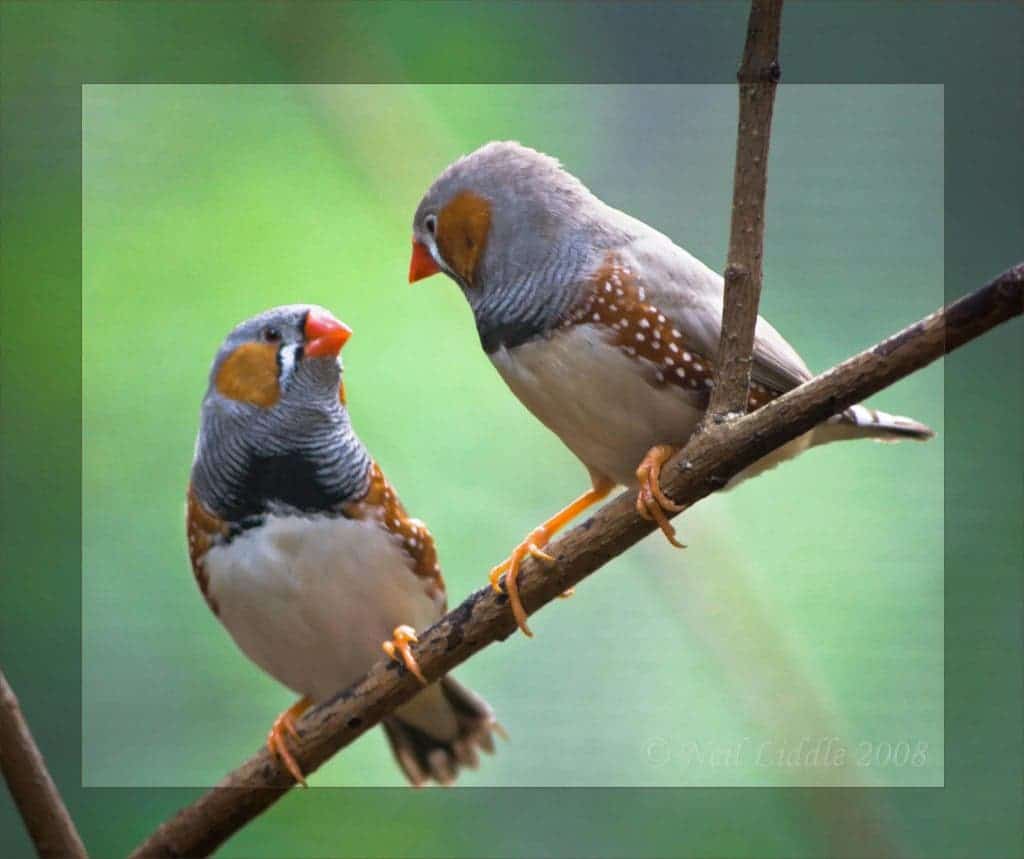
Darwin’s theory of natural selection predicts that it is more advantageous for males to seek out as many mates as possible. Some species, however, mate for life and often the males continue to dazzle females with courting rituals even after the pair has bonded and the female starts ovulating. Such mating behaviors have been more challenging to explain from an evolutionary standpoint.
Biologists at the University of Chicago and the University of North Carolina have developed an evolutionary model that explains why many birds continue to make elaborate displays of plumage and dances after they mate with a female. This all makes sense, the model suggests, because the male’s investment also elicits more investments on the female’s side, which devotes more energy into the brood. But, this form of sexual cooperation, it turns out, involves a delicate balance of inputs and outputs.
“Many bird researchers can tell a story like the experience I once had in the UK. I caught a female goldfinch, placed her in a bird bag and carried it back to the banding station. All the way back to the station, her mate followed, calling,” said UChicago biologist Trevor Price, who is the senior author of the new study.
“He waited impatiently in a nearby tree as I banded the female, and when I released her the pair flew off together in close company, twittering. This kind of thing happens in many other species, too, so forming a strong pair bond and emotional attachments between a male and female is evidently not only a feature of humans.”
In the 1980s, ornithologist Nancy Burley showed that slipping red bands onto the legs of male zebra finches (Taeniopygia guttata) turned them into sex magnets. The male finches, which already have red beaks, may elicit greater excitement in females by being even more flashy with the red bands. Burley famously showed that the female zebra finches respond to this mating display by working harder for the brood, raising more young.
However, while this strategy works very well for males, which now get to have more offspring that pass on their genes, females seem to be at a disadvantage because they have to invest more energy, lowering her chances of raising more healthy offspring in the future.
In their new study, Price and colleagues developed a mathematical population genetic model that evaluated various mating scenarios. The model weighed the cost of investment with the number of hatchlings that a pair could raise over many generations.
As an example, a female bird might lay three eggs, but a male with more blue coloration would cause the female to lay four eggs. Because blue males will have more offspring than duller males, blue males will become increasingly common over generations.
At the same time, caring for four eggs instead of three comes at a great cost to the female. Those females who only have to care for three eggs are at an advantage, so they become more common among the population. Running this game will ultimately result in all males being blue and all females laying three eggs. What happens, however, is that males that do not invest in display will prompt females to lay only two eggs, which is not good for either.
The evolutionary model produced by the researchers shows that the most mutually beneficial strategy is for males to stick around and display their key reproductive traits. This turned out to be true for any color or kind of display. What’s more, the female can become so dependent on a male’s display that she may stop ovulating in the absence of the male, as previously shown in ring doves.
“The models enable us to see the wide ranges of conditions that can cause displays to become stuck in the population, evolutionarily, and that can lead to this result,” said Maria Servedio, a researcher at the University of North Carolina and co-author of the study published in the Proceedings of the National Academy of Sciences.


